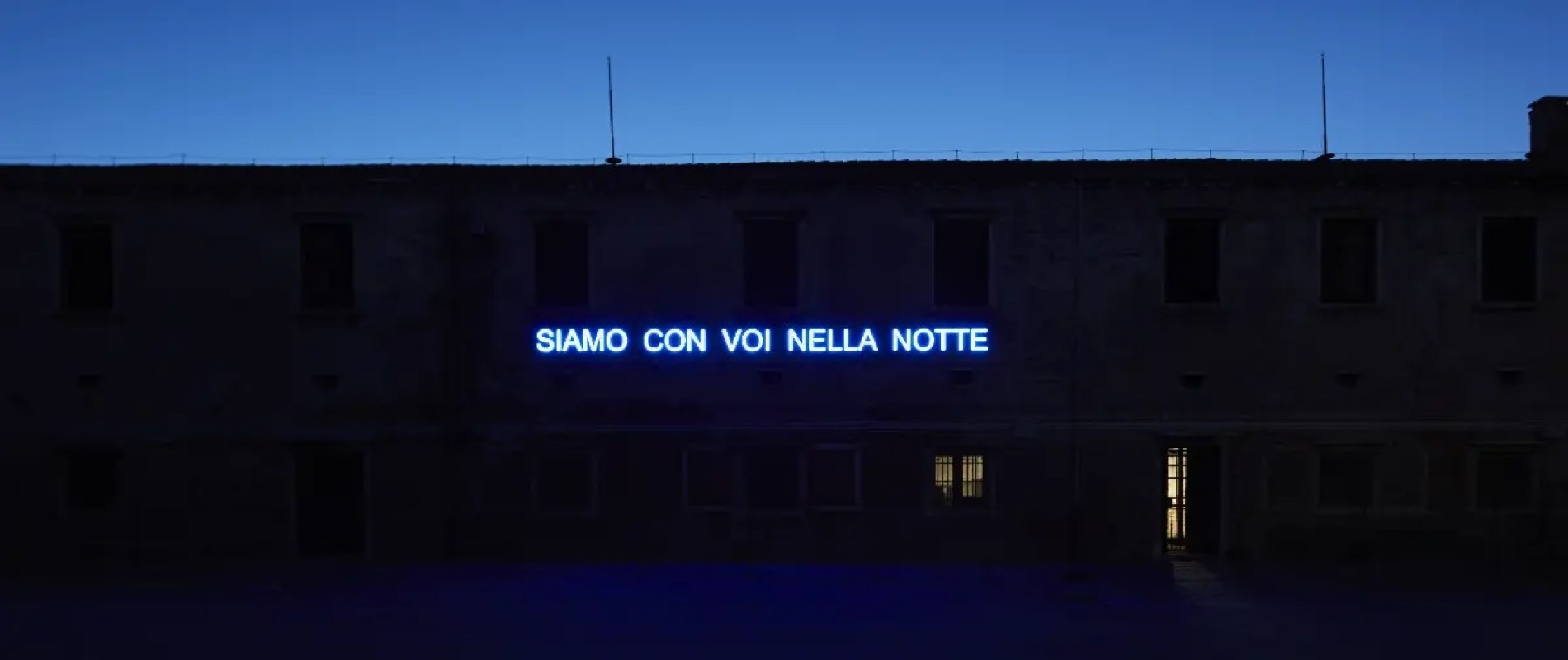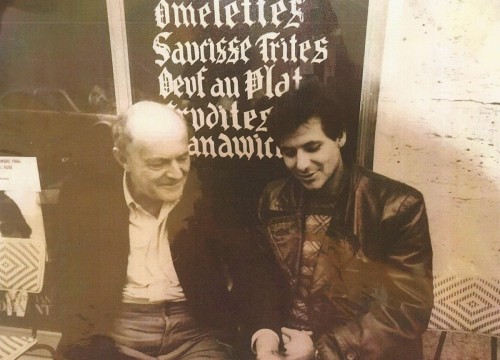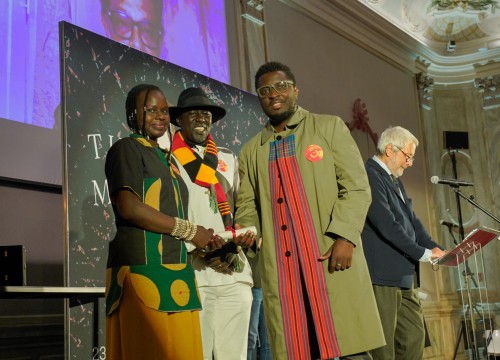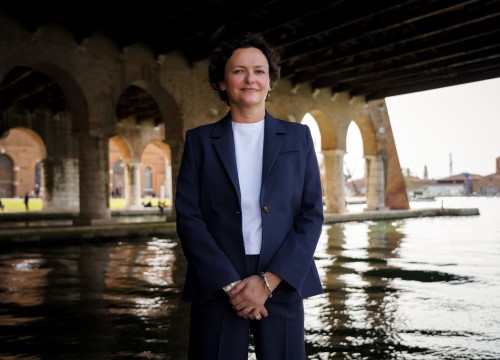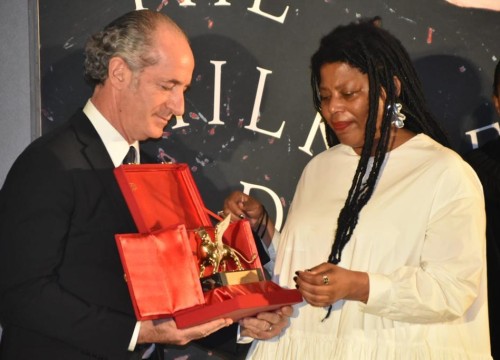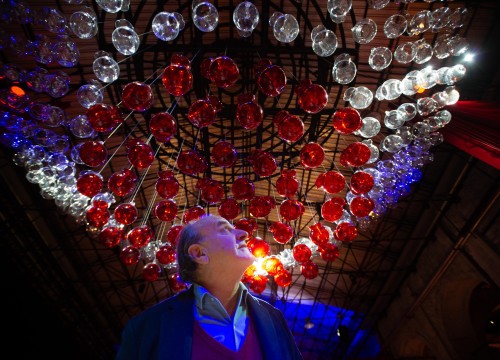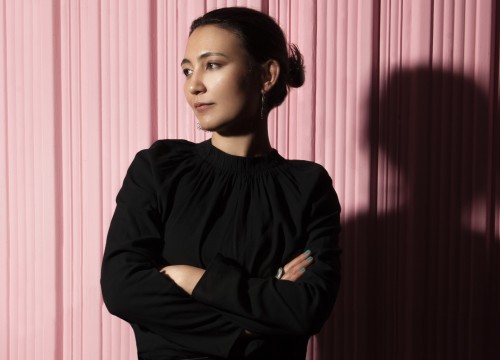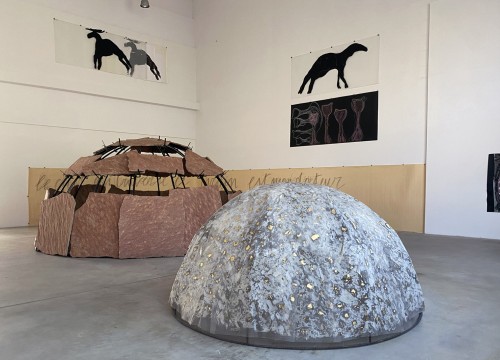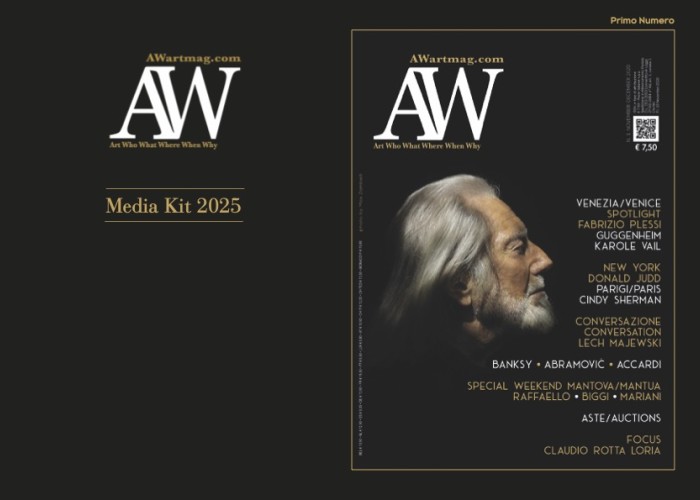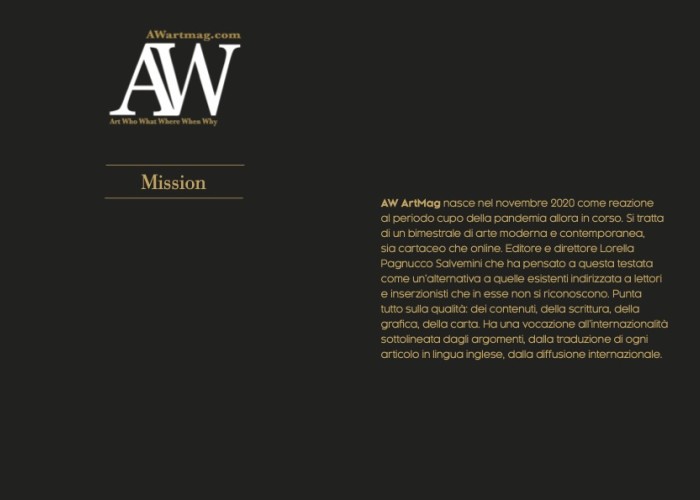That solidarity has to do with “the filthy lucre” is not so obvious, yet the term comes from solidum, money that was paid to professional fighters, the “soldiers”. Paying in solidum still characterizes, in the legal sphere, a bond of interdependence between debtors.
The word, during the French Revolution, expands the boundaries of its meaning to reach the ethical horizon of solidarity, which indicates closeness and sharing.
The Armoury of the Arsenale hosts, as part of the 60th Venice Biennale, the Pavilion of Ukraine with *Net making/Fare rete*: works that, inspired by the creation of camouflage nets for soldiers at the front, refer to the network that humans, sons of the same land, should make with each other in a communion that tightens “mortals in social chain” (G. Leopardi, *La ginestra*).
“Siamo con voi nella notte” (“We are with you in the night”) shines the Claire Fontaine LED writing—collective whose neon sculptures have given the title *Foreigners everywhere* at the current Biennale—on the wall of the women’s prison at the Giudecca, which houses the Pavilion of the Holy See. The curators, Bruno Racine and Chiara Parise, have made the stories of the prisoners a parable of suffering and dreams shared through voices that give voice to all humanity in a sorority that illuminates the darkness.
“If I can prevent a heart from breaking/I will not have lived in vain/if I will ease the pain of a lifetime/or heal a pain/or help a fallen robin/return to the nest/I will not have lived in vain" (E. Dickinson).
The solids, structured units with interdependent faces, can become, in sculpture, geometric fantasies. A successful example of a union of solidarity came to life in the furnace of Studio Berengo, in Murano, between one of the greatest contemporary artists and glass, giving rise to the refined exhibition, presented by FAI, *Tony Cragg, the form of glass* by Cristina Beltrami and Jean Blannchaert, in the Scarpa’s spaces of the Olivetti store in Piazza San Marco in Venice, where architecture and art come together in fruitful conversation.
The thought goes to Adriano Olivetti, who bought the space in 1957 and entrusted it to the genius of Carlo Scarpa: an enlightened entrepreneur, he conceived the company not only to produce profit, but as a social project according to the idea that happiness generates efficiency. In the same years when, at other latitudes, Martin Luther King said, “We learned to fly like birds, to swim like fish, but we have not yet learned the simple art of living together as brothers,” the concrete Olivetti commitment for active solidarity in the company was a prospect still full of potential.
The gaze of solidarity must also be extended to the animal and plant world. We do not have another planet. If we had adopted the vegetable paradigm, maybe we would not have the environmental crisis in which we live? (L. Bruni, *Vegetable economy. What could capitalism have been if it had learned from plants...*).
Suggested listenings:
- Barbara Strozzi (17th century), *Che si può fare*
- Ludwig van Beethoven, Symphony No. 9, fourth movement

